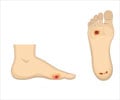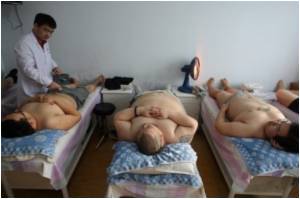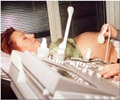New insights on a regenerative molecule can help treat non-healing wounds and injuries such as diabetic foot and prevent limb amputations
Highlights
- New insights on a regenerative molecule can help prevent limb amputations in diabetic foot patients
- In England alone, the number of diabetic foot amputations per day is at all time high 20
- The de-oxyribose-1-phosphate can be induced to stimulate skin repair by increasing the vascularization of wounds and non-healing ulcers.
A study led by the universities of Exeter and Bath has made great strides in understanding, how the molecule dRP (deoxyribose-1-phosphate) can stimulate the formation of new blood vessels considered critical to tissue damage in the body.
This project funded jointly by the Medical Research Council, and BBSRC (Biotechnology and Biological Sciences Research Council) can help us understand how dRP (deoxyribose-1-phosphate) could open new treatment avenues by encouraging the body to heal.
Dr. Giordano Pula, of University of Exeter Medical School, lead author says "We’re very excited to provide new insights into how this particular molecule works to stimulate the formation of blood vessels in people. We now hope to be able to use this knowledge to trigger the formation of new blood vessels in patients where this is required for tissue regeneration, such as diabetic foot."
How does it work?
This study demonstrates the deoxyribose-1-phosphate’s activation of NOX2 (NADPH oxidase 2 ) enzyme, responsible for an NFkB9 (Nuclear Factor Kappa B) transcription factor stimulation This NFkB transcription factor stimulation is in turn responsible for specific gene activation needed to initiate the formation of new blood vessels.
Dr Pula’s team is now planning to focus their investigation on the ability of deoxyribose-1-phosphate to stimulate skin repair by increasing the vascularisation of wounds and non-healing ulcers.
Reference
- D Vara D, JM Watt JM, TM Fortunato TM, H Mellor, M Burgess, K Wicks, K Mace, S Reeksting, AT Lubben, CP Wheeler-Jones CP, G Pula. Direct Activation of NADPH Oxidase 2 by 2-Deoxyribose-1-Phosphate Triggers Nuclear Factor Kappa B-Dependent Angiogenesis, Antioxidants and Redox Signaling.doi: 10.1089/ars.2016.6869
Source-Eurekalert
















